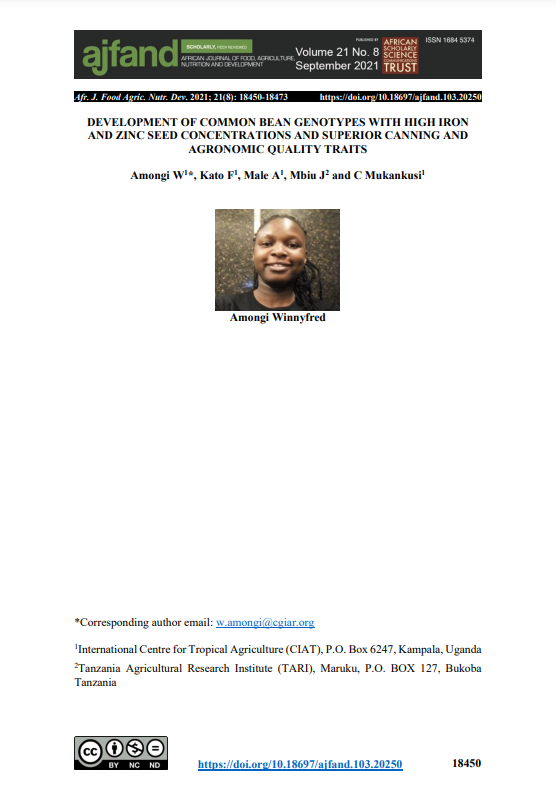Iron deficiency anemia is prevalent worldwide but mainly affects children under five years of age and women of reproductive age. One of the main causes of anemia in these groups is diet incapable of meeting daily iron requirements. Biofortification of staple foods is an approach aimed at contributing to reduction of anemia in Africa, and common bean (Phaseolus vulgaris L.), one of the leading staple foods in East and Central Africa, has gained attention as a valuable source of iron (Fe) and zinc (Zn). Its usefulness in improving iron status of iron anemic women and children is documented. Natural variation in iron and associated micronutrients like zinc exists in beans but their concentrations are below the target levels to meet daily requirements.
This study aimed to develop and identify potential bean genotypes that surpass the HarvestPlus threshold of 90 ppm seed iron for possible promotion as high iron and zinc beans, and utilization in hybridization programs targeting these minerals, productivity and market traits. Advanced 578 genotypes were evaluated in five genotype groups planted in three locations from 2016 to 2018. Genotypes significantly differed (P≤0.05) in Fe, Zn, cooking time, canning quality and yield. Iron and Zn varied highly, ranging between 44-118 and 25-50 ppm, respectively, across the five-genotype groups. Cooking time ranged from 29-118 minutes and majority of the genotypes expressed good to excellent canning quality based on visual assessment (4-5) and hydration coefficients (2.1-2.2).
Mean yields for bush beans and climbers were 1674-1977 kg ha-1 and 2204-3160 kg ha-1, respectively. The most outstanding genotypes that combined above average yield with high Fe/Zn were CMKN1109 (96/ 43 ppm), SMR103 (92/ 43 ppm), SMC12 (90/43 ppm), and NUS16 (91/ 48 ppm). In addition, NUA127 (84/ 42 ppm), SMR53 (84/42 ppm), SMC160 (84/ 43 ppm) and NUA595 (83/ 42 ppm) yielded above average and expressed high canning quality. The genotypes that combined high Fe/ Zn, canning quality, and yield are potential genotypes for further improvement or evaluation for possible release.
Amongi, Winnyfred; Kato, Fred; Male, Allan; Mbiu, J.; Mukankusi, Clare

